How to reduce noise in timber homes using reliable data
Acoustics, fire, structural performance and sustainability: soundproofing in timber homes, explained with tests in hand
Acoustics, fire, structural performance, sustainability: anyone who thinks soundproofing is merely a noise issue risks overlooking key aspects that are vital to the overall performance of a timber structure.
Acoustic vibrations – and the noise that follows – travel through surfaces, walls and even through the air, but also through structural elements themselves, via joints and connection systems.
It’s often these areas that determine the success or failure of a building in terms of acoustic comfort, but also thermal and structural performance.
To better understand how to manage these critical points, an approach is required that goes beyond mere acoustic well-being, without focusing on structural or thermal performance alone.
In practical terms, addressing all these intricate aspects in construction requires specialised knowledge across multiple engineering fields and the ability to carry out detailed, complex calculations. Yet, in the day-to-day reality of site work or technical departments, this is rarely feasible.
That’s why, in addition to developing solutions for acoustics, at Rothoblaas we’ve conducted dozens of tests in recent years to understand, certify and provide ready-to-use data to help manage all critical aspects in an integrated manner: acoustics, structural performance, fire resistance and sustainability.
Here’s what we’ve already tested for you – so you don’t have to.
Designing acoustics in timber: context matters more than noise
Tackling the issue of noise in timber homes doesn’t just mean inserting any kind of sound-absorbing or sound-insulating material. It means working with a layered, deformable construction system complete with complex connections. In this context, every interface – whether between CLT panels, wood and concrete, or structural elements and partitions – can become a preferred path for sound transmission.
That’s why a multidisciplinary approach is essential: developing a product with just one certified function isn’t enough – it must be integrated into both static and dynamic assessments to support designers and installers in their work.
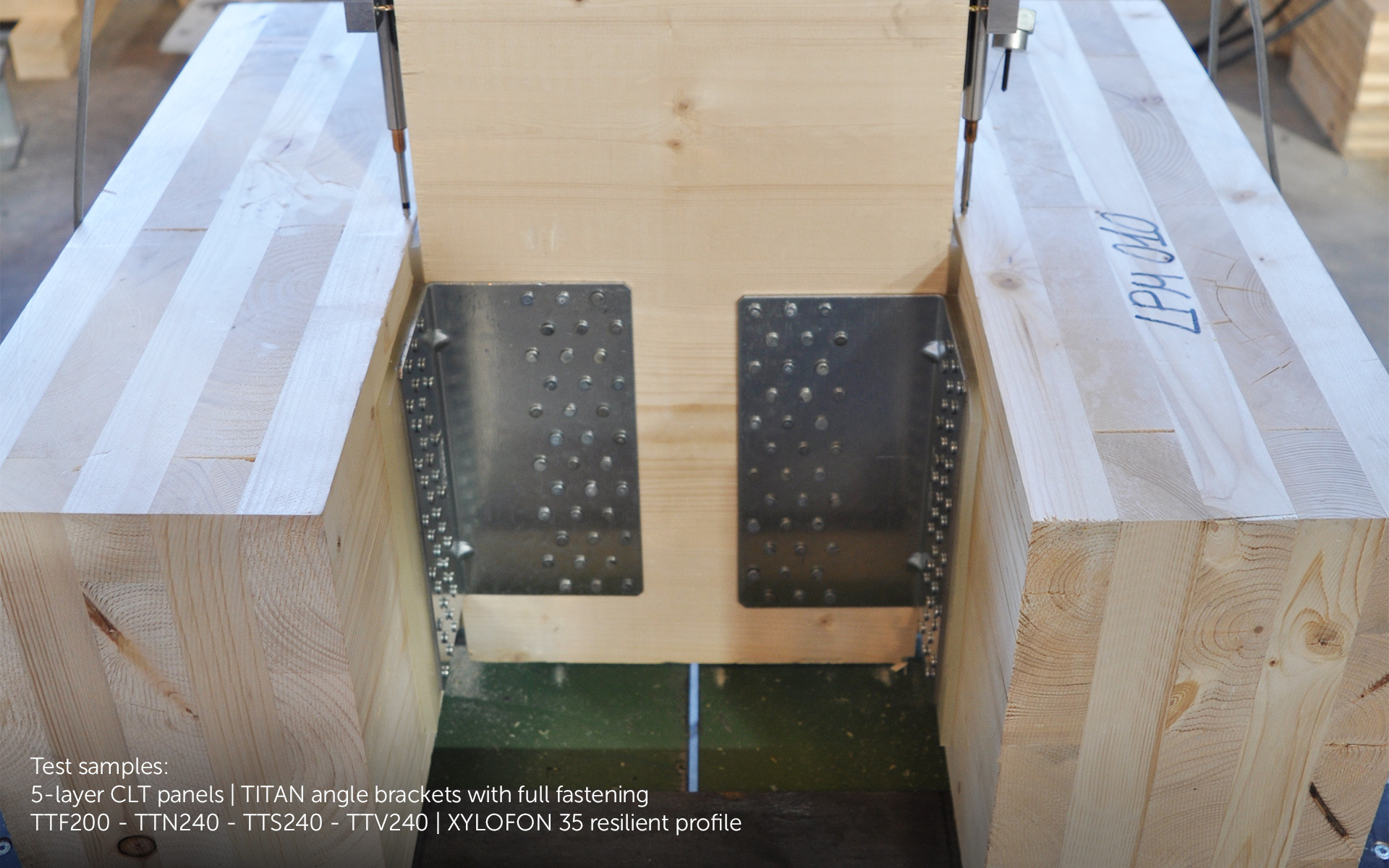
Soundproofing and structural performance: when acoustics must bear the load
An acoustic profile cannot be considered effective if it fails under load or undermines the performance of the connection systems. That’s why Rothoblaas has carried out several experimental campaigns with TU Graz, the University of Innsbruck, the University of Bologna and the Karlsruhe Institute of Technology, focusing on the mechanical behaviour of XYLOFON profiles and their influence within the connection system.
During the initial test campaigns, various configurations were examined, going well beyond acoustic performance alone. CLT panels made from spruce and birch were tested under different humidity conditions and varying load levels.
As part of these initial campaigns, the following were tested:
• XYLOFON profiles
• HBS screws
• XYLOFON WASHERS.
Building on the experience gained, a new research project was launched to characterise the static behaviour of connections with an interposed profile. The study measured the static friction coefficient, the shear stiffness of the XYLOFON and PIANO acoustic profiles, and analysed the mechanical strength of real-word configurations.
The tests were conducted by varying the type of connection system, the diameter of the connectors, as well as the type and thickness of the resilient profile.
The following were tested as part of the project:
XYLOFON profiles
PIANO profiles
HBS screws of varying diameter
VGS screws
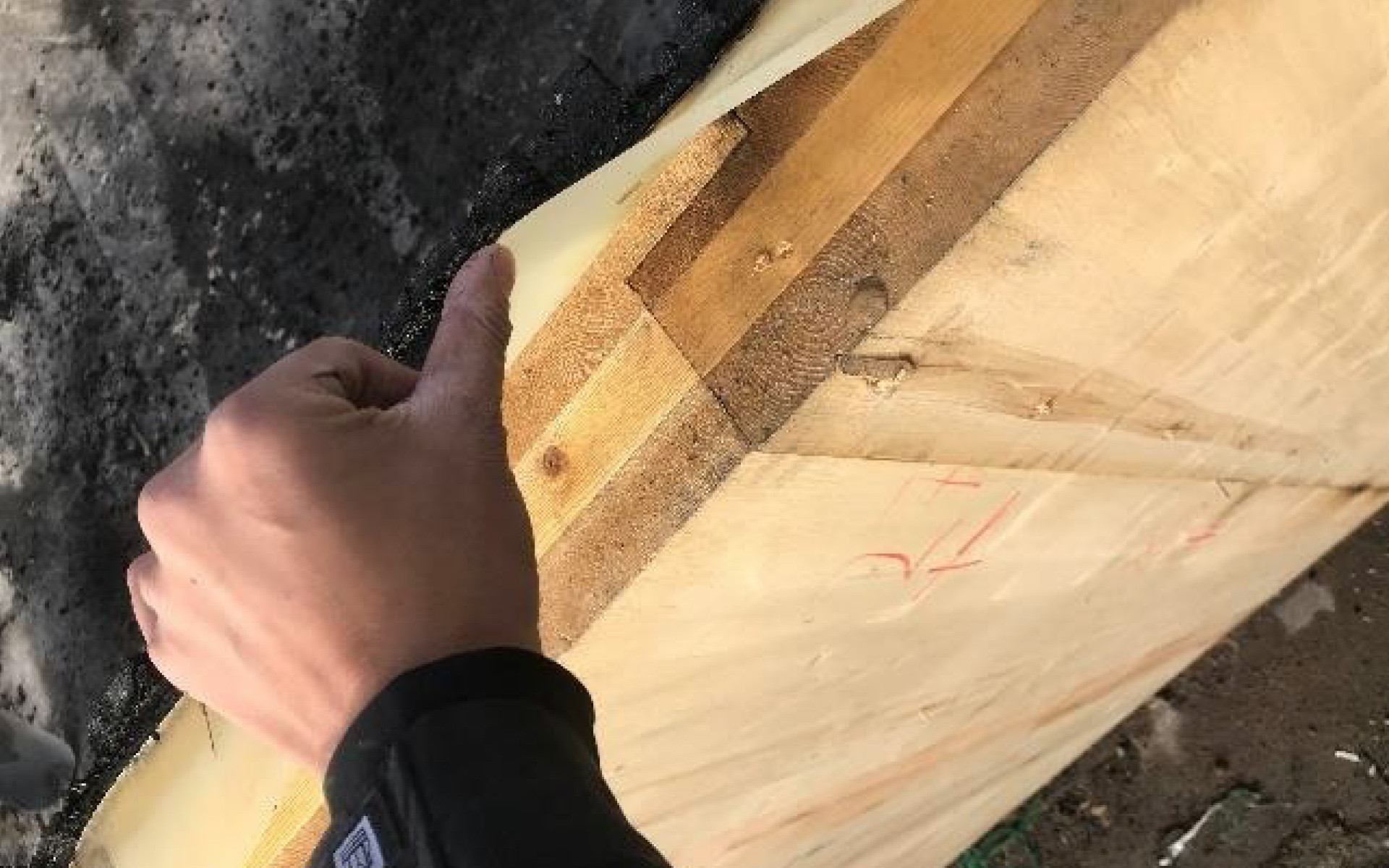
Acoustic comfort and fire safety: profiles tested for 90 minutes under direct flame.
Acoustic performance can quite literally go up in smoke in the event of a fire: synthetic materials commonly used in profiles and sound-absorbing layers often fall victim to flames, and can even contribute to their spread.
Even a 6 mm profile like XYLOFON can compromise the continuity of fire resistance in a CLT wall. If a joint creates a discontinuity, that’s where the fire will break through. That’s why we tested XYLOFON profiles under real conditions, directly exposed to open flame.
Result: EI 90 classification – no smoke or flame penetration for 90 minutes.
REI vs EI: what does this rating actually measure?
The key difference between REI and EI in fire resistance classification is the inclusion of “R” in REI, which refers to mechanical resistance or load-bearing capacity.
While REI refers to a building element’s ability to maintain stability (R), integrity (E) and thermal insulation (I), EI indicates integrity and insulation alone. It is therefore applied to non-structural elements that are not required to preserve their mechanical strength during a fire, but must still prevent its spread.
Once the XYLOFON profile’s EI performance had been confirmed, we also contributed to the European RISE project, conducting full-scale fire tests on CLT panels exposed to fire for over four hours. No secondary flashover, and temperatures below 300 °C after three hours. A valuable design assurance for those working on multi-storey buildings or with exposed CLT walls.
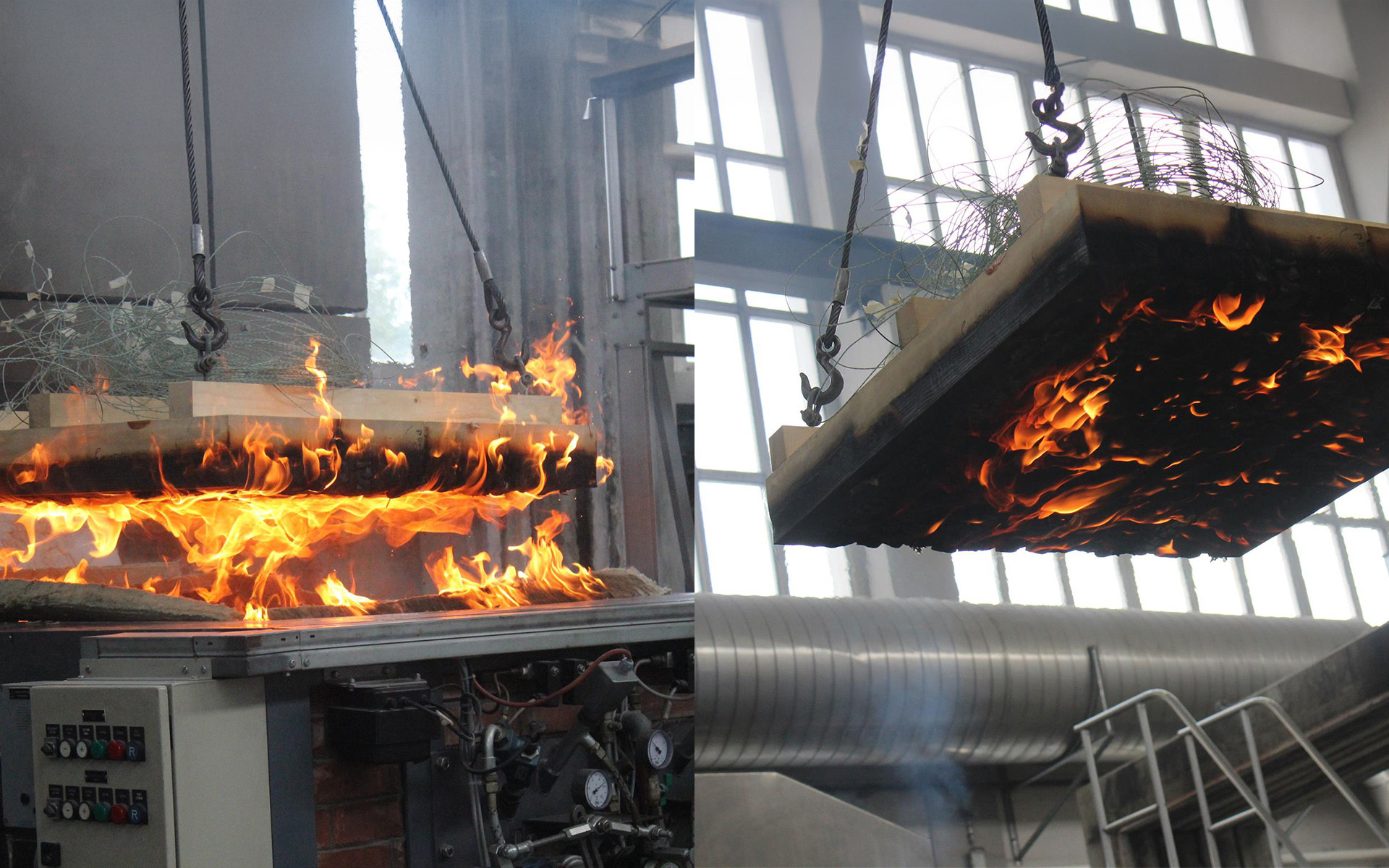
EPDs and sustainability: environmental calculations, ready to use
Another critical factor in integrated acoustic design is environmental assessment. As the more attentive will note, the compounds used to achieve the acoustic performance of soundproofing products are often deemed less environmentally sustainable – though we’re already working on that too.
But does this mean giving up soundproofing to achieve low environmental impact buildings? Of course not – it means understanding the details so they can be properly balanced.
To take part in public tenders, earn LEED credits or comply with CAM (Minimum Environmental Criteria), certified EPDs are required. Yet for many acoustic materials, this data either doesn’t exist or is based on rough estimates.
Rothoblaas has thoroughly analysed the entire production chain and undertaken a process to define the product’s LCA (Life Cycle Assessment), ultimately obtaining certified EPDs. That’s how we’ve acquired and published Environmental Product Declarations for our acoustic profiles, issued by independent third-party bodies. Thanks to this commitment to transparency, our EPDs are:
valid for the entire life cycle (LCA),
compatible with BIM and LCA software,
usable in official environmental calculations.
This allows professionals to design using reliable data, without having to depend on theoretical estimates. It becomes possible to demonstrate the actual environmental impact of a component directly within the final working project, and, if needed, offset it through the selection of other materials.
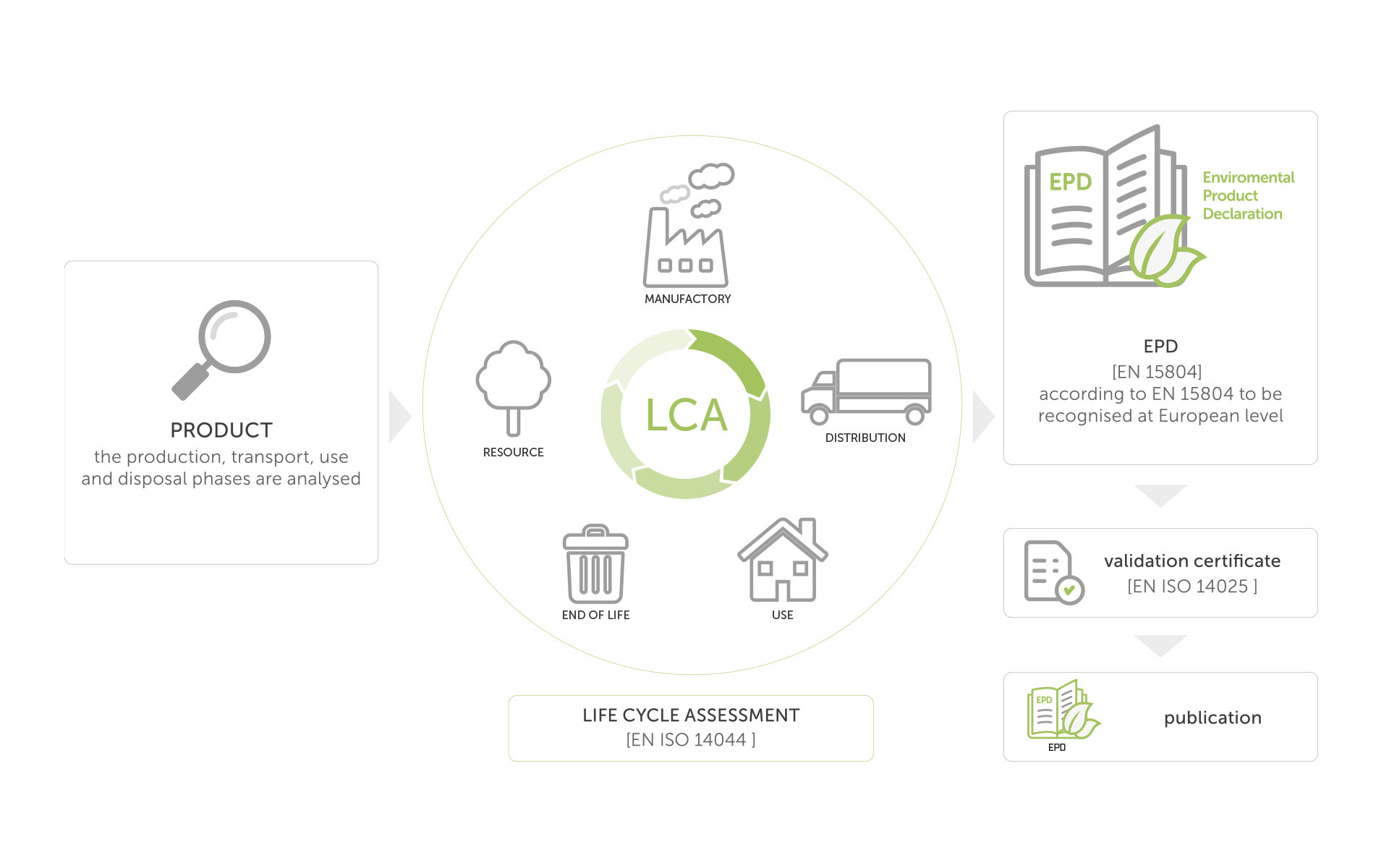
CE Marking: a one-of-a-kind in acoustics
XYLOFON profiles are the only ones on the market with a CE marking valid for both acoustic and structural performance. This allows designers to include the profile in structural calculations without requiring further verification of its mechanical properties.
We have tested:
shear stiffness with screws and plates,
the profile’s influence on dynamic friction,
residual deformation in the presence of structural connections,
compatibility with angled systems such as TITAN.
This extensive and complex experimental process resulted in the first ETA, making CE marking possible for resilient profiles. To date, Rothoblaas XYLOFON and PIANO profiles are the only ones in the world to hold this important European certification.
All of this is documented in comprehensive technical manuals, featuring lab-validated data ready to be integrated into structural calculations. This eliminates uncertainty and simplifies project planning.
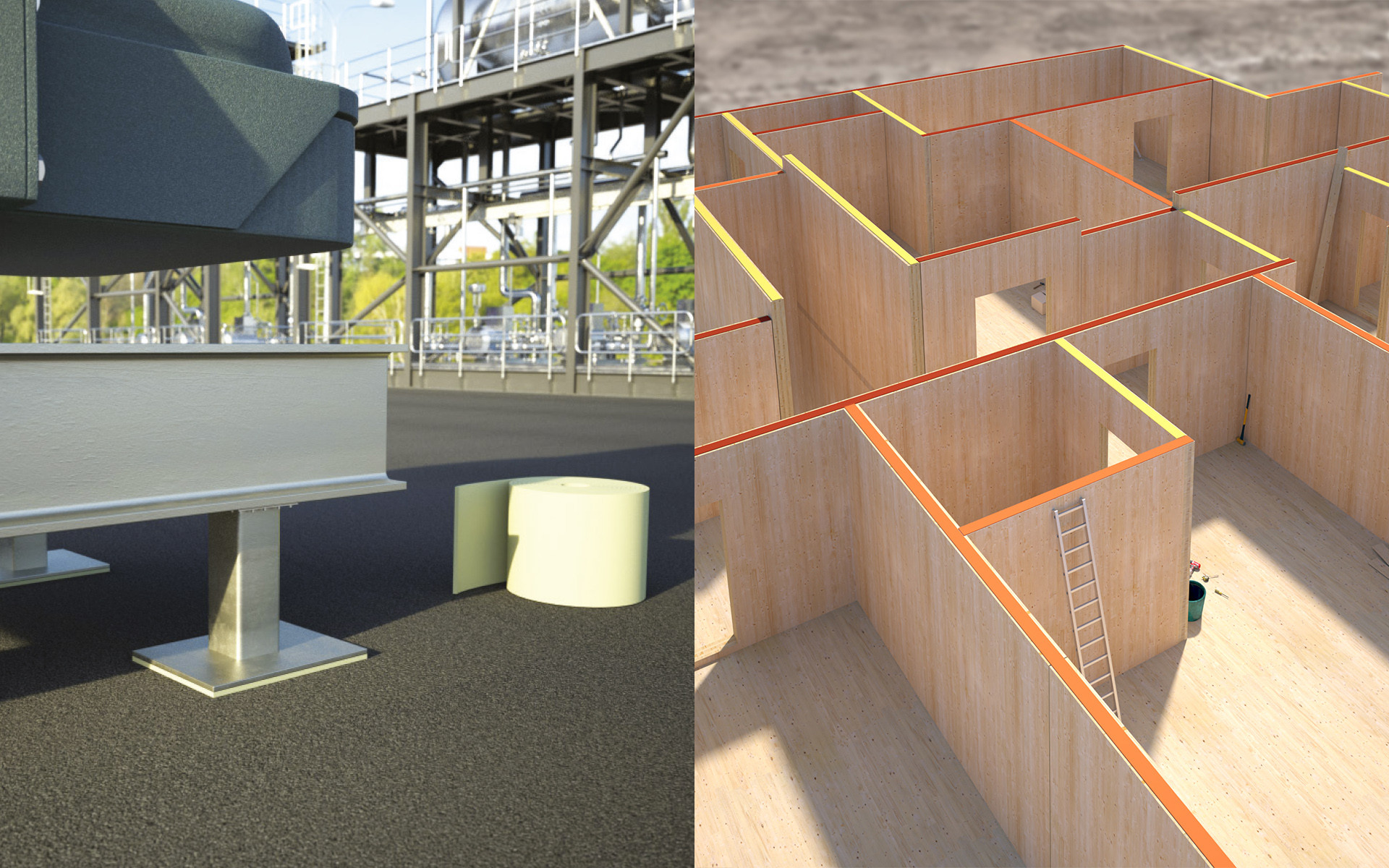
Integrated design: a single solution for countless problems
Design professionals know just how challenging it is to balance acoustic, mechanical, regulatory and environmental-energy performance – especially at structural junctions where multiple materials and functions converge. That’s why every soundproofing profile in the Rothoblaas range comes with its own technical “ID card”, including:
acoustic values (dLw, Rw, L’nT),
verified structural data (stiffness, friction, loads),
fire resistance certifications
CE marking,
official EPDs.
No assumptions or on-site testing are needed. Everything has already been verified.
Soundproofing is essential. And it needs to be fully understood. But managing every aspect of noise and sound propagation control doesn’t require becoming an acoustic engineer or a multidisciplinary specialist. What Rothoblaas aims to do is provide tested, verified, ready-to-use data, enabling informed choices that meet all technical requirements – not just acoustic ones.
Acoustics go beyond the product – it’s about the entire design approach. It’s a discipline that requires attention to layering, connections and vibration transmission – also in relation to static loads and fire safety.
The role of design, therefore, is to manage these factors effectively and integrate acoustic solutions seamlessly within the overall building system.
For those who want to dive deeper with data, vibration curves, frequency charts and both dynamic and static behaviour, over 250 pages of test reports are available at:
https://www.rothoblaas.com/blog/acustica-fuoco-e-statica
All rights reserved
Technical Details
- 国家:
- Any
- 产品:
- DOUBLE BAND HBS LBS PIANO SHARP METAL TITAN DIVE TITAN F TITAN N TITAN PLATE C TITAN PLATE T TITAN S TITAN SILENT TITAN V VGS XYLOFON XYLOFON WASHER

